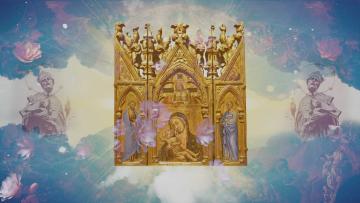Saint Benedict

Uncover Hidden Saints meanings
It is said the saint Benedict pioneered the formation of 12 monk communities in Italy, at Subiaco which is forty miles from the capital Rome. Afterwards, he moved a mountainous area to the south Italy that was known as Monte Cassino.
There are unproved claims that he had the intentions to pioneer the coming up of a rebellious Roman Catholic wing. You need to distinguish the Order of Saint Benedict form the Saint himself as follows; the order came up much later and is rather a group of independent gatherings.
The saint has been associated with several achievements but the most notable one is the one that he specifically laid down for his followers that was named Rule of Saint Benedict. The article is influenced by the articles that were written by John Cassian and on the overall, it has been said to be having a strong relationship with another writing known as rule of the master.
The writing has unique qualities of balance, reasonability and moderation which have made it one of the highly religious groups that were formed in the Middle Ages. Benedict is referred to as the pioneer of western monastic as this rule has been considered best among those in Western Christendom.
Requesting petitions for the following:
- Kidney disease.
- Protection against infections.
- Safe labor.
- Sick animals.
- Feast: 11-Jul.
- Day: Saturday.
- Candle/Emblem: White. Raven and brandy cup.
- Matters Concerning: Kidney disease, protection against infections disease, ending fevers, safe labor, healing sick animals, and assistance at a time of death. Patron of monks.
Saint Benedict’s influence
There has been tendency to refer to the early middle Ages as the "Benedictine centuries." Many clergy and scholars have taken time in studying the effects of the saint in various parts of the globe. The most recent one is the one that was carried out in the year 2008 by the current pope, Benedicts XVI in which he looked into the impact of Saint Benedict on religion in the Western Europe region over the centuries.
The pope then concluded that the Saint had done the best to make an improvement of in the overall development in the European culture and development in the region; he further argued that this was very essential in the coming times as it assisted the Europeans to recover the dark era of leadership under the Roman Empire.
Up to this day, this famous rule that St. Benedict laid down is one of the most applied in the management of monks and monasteries, many years after being laid down. The overall influence that Benedict had on Europe was to create unity base don the Christian faith.
Veneration of Benedict
Saint Benedict die while he was reciting the prayer of God, this occurred in a place called Monte Cassino in Italy. In 1964, the then reigning pope, Paul VI named him Europe’s protector while in 1980 he was decaled Europe’s co patron who works hand in hand with other two saints namely; Cyril and Methodius.
The saint Benedicts feast has always been observed on the 21st March of every year. His memorial is inclusive in the Roman Martydology.
By Florance Saul
Aug 17, 2012







